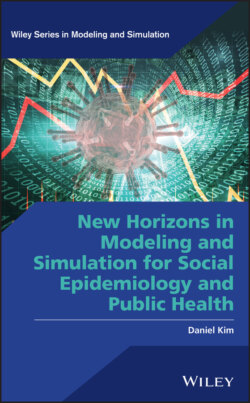Читать книгу New Horizons in Modeling and Simulation for Social Epidemiology and Public Health - Daniel Kim - Страница 27
2.3 Comparison of Agent‐Based and Microsimulation Models
ОглавлениеFigure 2.1 illustrates some key differences between ABM, MSM, and statistical models (e.g. regression) as commonly used in population health. Unlike traditional models which draw on existing observational data, system science approaches such as ABM and MSM conduct ex ante assessments—for example, to consider the potential effects of policy interventions for which no data yet exist (and which therefore cannot easily be addressed by linear regression). In doing so, they leverage an ability to account for dynamic histories of individual agents, thereby incorporating changes in exposures over time, and to account for heterogeneous actors and behavioral responses. Behavioral responses include changes in the behaviors of agents in response to a new economic policy (e.g. tax policy) that imposes changes in individuals' budget constraints. Microsimulation is particularly well suited for studying the impacts of economic policies, including tax and welfare policies. Meanwhile, neither ABM nor MSM are specifically designed to enhance causal inference—such as by removing endogeneity—unlike advanced epidemiologic methods such as marginal structural regression and inverse probability weighting approaches that have been developed in recent years (Hernan and Robins 2010).
Figure 2.1 Key differences between agent‐based modeling, microsimulation modeling, and traditional statistical models.
An important distinction between ABM and MSM as commonly used in population health and social science is that MSM generally do not include any characterization of social interactions between individuals (except indirectly via a social‐level variable). By contrast, ABM models are generally focused on such interactions. Hence, MSM might be best suited for, say, consideration of tax policy, whereas ABM might be better suited for studying contagion of infectious disease.
